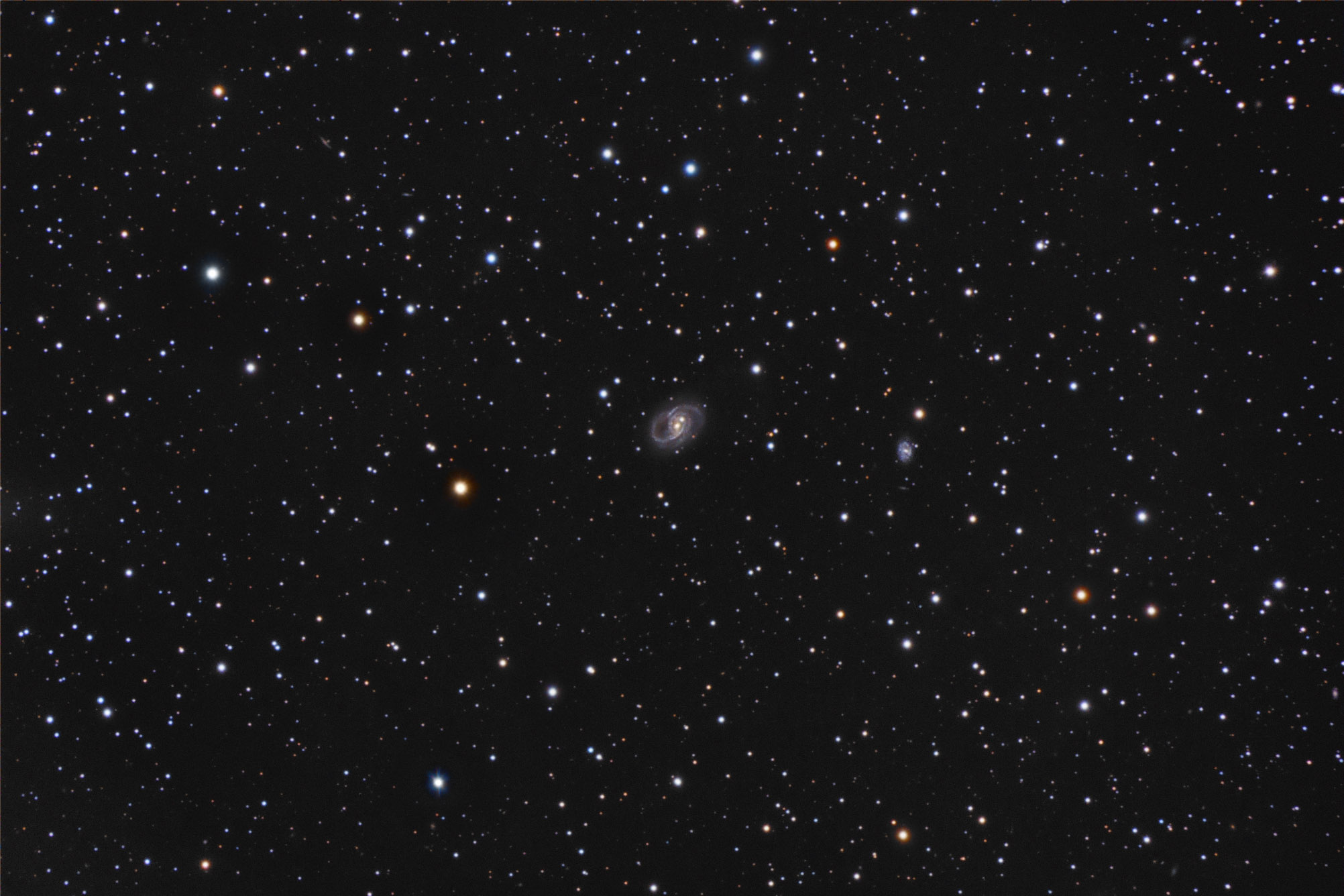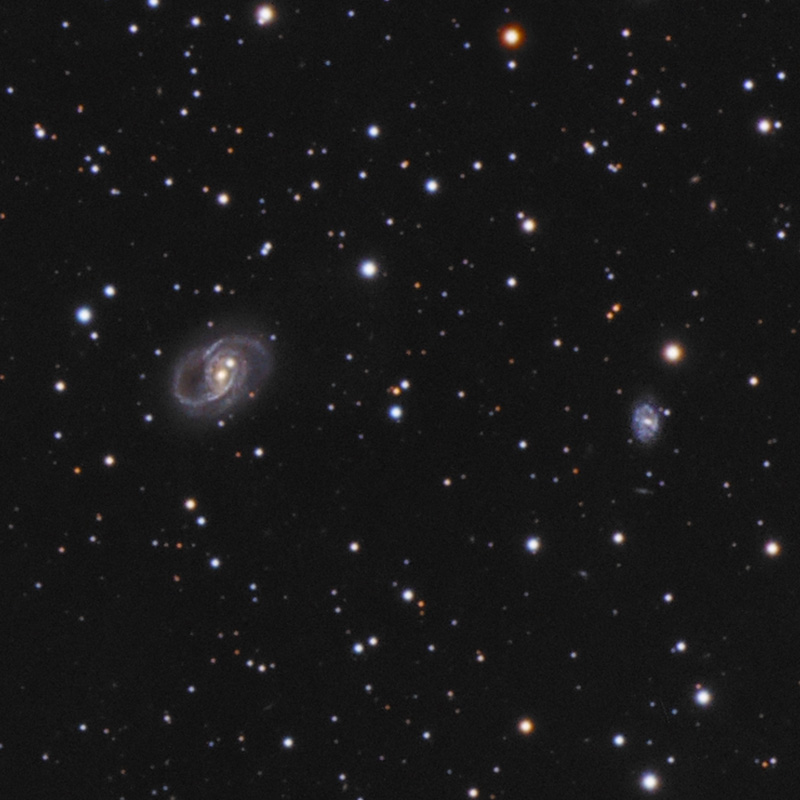| Description | Images |
Object name: NGC1207Designation(s): NGC1207, NGC 1207 is a nice face on spiral in Perseus. It made my list for two reasons. First of all, it is a bit odd in shape with two odd arms that, at first glance, come from two cores. The two cores is an illusion as one is just a field star. The other reason for making my list is it is one of the second Herschel 400 objects. While I'm far from done with the first list I am also picking up an occasional object from the second list when it is otherwise interesting as in this case. William Herschel discovered it in 1786. The galaxy is about 210 million light-years distant. NED classifies it as SA(rs)b while the NGC project says simply Sb. I see a faint orange bar going nearly north-south from the core to the ring. Apparently, it doesn't meet the requirements of a true bar. Edit: I see Seligman classifies it as SAB(rs)bc? so he sees a bar. William Herschel discovered it on October 18, 1786. Related Designation(s):2MASX J03081551+3822557, 2MASXi J0308154+382255, AKARI J0308153+382250, CGCG 0305.0+3811, CGCG 524-055, GALEXASC J030815.57+382256.3 , IRAS 03050+3811, IRAS F03050+3811, KPG 087, LDCE 0242 NED001, LGG 083:[G93] 001, MCG +06-07-043, NGC 1207, NGC1207, NSA 133183, NVSS J030815+382256, PGC 011737, UGC 02548, UZC J030815.3+382258, |

